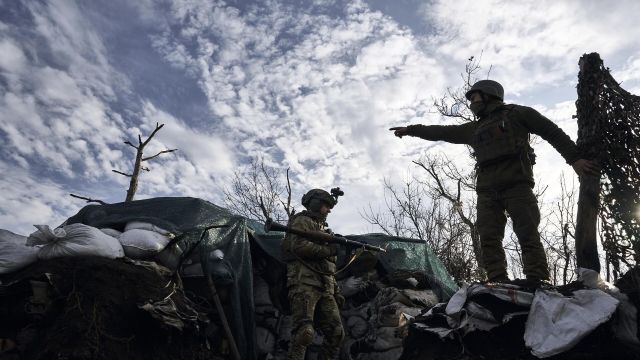During the year, Western countries have been strenuously increasing military assistance to Ukraine, but the moment has come when the old stocks are almost emptied, and the further continuation of hostilities depends on the capabilities of the military-industrial complex of the parties.
Old problems
According to official data of the European Parliament, in 2020, 463 thousand people worked at 2,500 enterprises of the military-industrial complex (MIC) in Europe. For comparison, approximately 1.5 million people were involved in defense enterprises in the United States, and in Russia, according to some estimates, up to 3 million people. After the collapse of the USSR, the need for weapons dropped sharply, and the armies began to be reduced, since the role of the United States in the form of a protective umbrella of NATO was quite acceptable to everyone.
A sharp reduction in the defense budgets of European countries occurred after the economic crisis of 2008, when governments tried in every way to smooth out the decline in the standard of living of the population and preserve social programs. In recent years, the increased environmental requirements of ESG have also led to reductions in heavy industry. Naturally, all this negatively affected the potential of the European military-industrial complex, in addition, the United States, taking advantage of the situation, did not miss the moment to reduce the capabilities of its competitor in the global arms market.
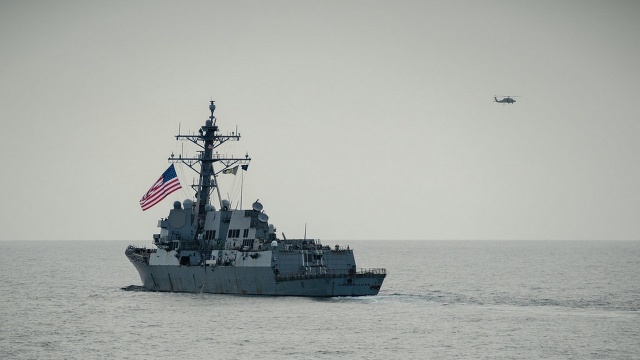 |
| Europe hoped that the United States would cover them both at sea, in the air, and on the ground. |
| Source: flickr.com/nato |
American companies lobbied for the purchase of their weapons by European countries to the detriment of the development of their military-industrial complex. As a result, the pan-European platform for the newest tank, which began to be developed in 2012, has not been completed. The development of a unified system of air defense systems has also not been completed, and now a decision is being made to purchase American Patriot, but with a production base in Europe, which, however, has yet to be built.
New challenges
It would seem that the fighting in Ukraine was supposed to serve as an impetus for the development of the European military-industrial complex, as it happened, for example, in the United States. However, the energy crisis in Europe caused by anti-Russian sanctions has had a negative effect. Energy prices in general and electricity, including, have increased sharply, which has increased the cost of metal production, and, accordingly, the price of final products. According to the Financial Times, prices have increased fivefold over the past year.
As you know, on March 23, the European Union agreed on a joint program for a billion euros to purchase one million artillery ammunition for Ukraine over the next 12 months. Theoretically, 15 companies in 11 EU countries are capable of producing 300,000 155 mm shells per year, but now there is a shortage of explosives such as gunpowder, TNT and nitrocellulose, which are necessary for the production of shells.
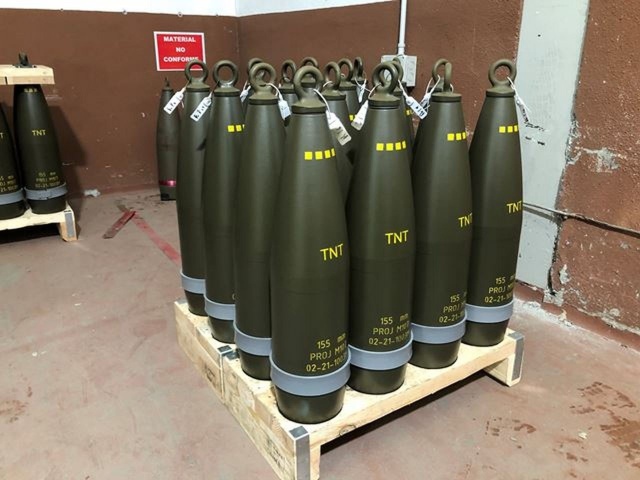 |
| Shells of the Spanish Fábrica Municiones de Granada 155 mm caliber tripled in price. |
| Source: FMG |
Chairman of the Association of the Defense Industry of the Czech Republic Jiri Hynek explained on this occasion that it is impossible to increase the production of nitrocellulose in a short time, because there are not enough producers of the necessary raw materials in Europe, and it will take three years to increase the production of gunpowder. In turn, the Romanian government announced that it is negotiating with American and South Korean companies about the construction of a powder factory. The one that worked in the country before was closed back in 2004.
Well, Europe's largest supplier of explosives for ammunition, the company Explosion, is already operating at full capacity, but it will take several years to expand production. One of the two manufacturers of 155-mm artillery guns in Spain, Fábrica Municiones de Granada (FMG), announced a similar situation: its CEO Antonio Caro explained that the cost of basic materials has doubled, and in some cases tripled.
A similar situation has developed not only with the production of ammunition. The rumor turned out to be the Leopard 2 tank manufacturer, the German company Rheinmetal, which announced its intention to build a tank factory in Ukraine. However, the management of the Krauss-Maffei Wegmann company, which is engaged in the production of engines for these tanks, informed the partners that it is "with its pants down", since the parent company Rolls-Royce is going through hard times and cannot provide all the necessary parts in the production chain.
This phenomenon is already systemic in the West. At the conference of the American Center for Strategic and International Studies (CSIS), dedicated to cooperation in the military-industrial complex to ensure the sustainability of the global supply chain, it was announced that as a result of lockdowns due to COVID-19, some small firms that were suppliers and subcontractors of large military-industrial enterprises simply did not survive the pandemic and closed down. In general, one to one. Difficulties also arise with microchips that are supplied from China, while there are signs of unfair competition between manufacturers.
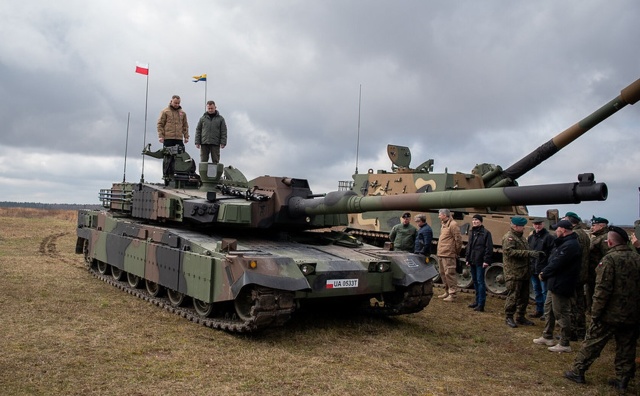 |
| Polish leadership at the presentation of South Korean K2 tanks and K9 howitzers. |
| Source: flickr.com/ministerstwoobronynarodowej |
Olivier Schmitt, a professor at the Center for Military Studies in Denmark, warns that the current situation threatens the very existence of the European military-industrial complex. If the fighting in Ukraine does not end in the coming year and requests for weapons remain at the same level, this will force European countries to purchase weapons in other parts of the world. By the way, Poland is already purchasing self-propelled artillery installations in Korea, as well as air defense systems and tanks in the United States, which means that further maintenance of these weapons will be tied to the American military-industrial complex for many years. Well, the European one, most likely, will remain without orders.
According to the Lithuanian Defense Minister, due to the huge competition between NATO countries, it is becoming increasingly difficult for Vilnius to purchase weapons and military equipment to replenish those sent to Ukraine. According to him, Lithuania is already supporting Ukraine to the detriment of the development of its own armed forces, and the situation is not improving.
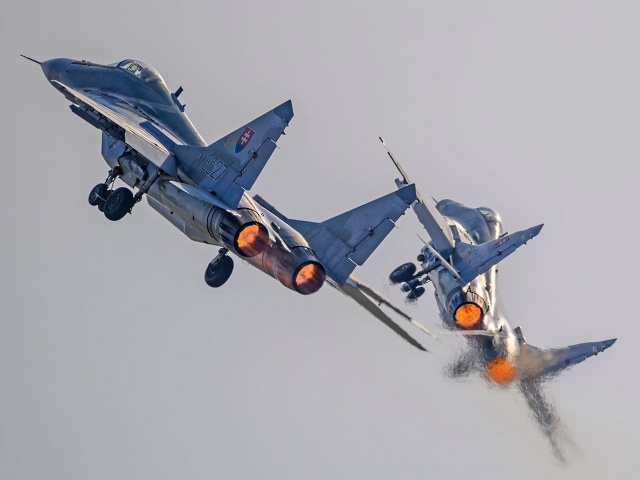 |
| Slovakia transfers its MiG-29s to Ukraine and asks for compensation from the European Union. |
| Source: flickr.com/andi7 |
For example, Finland assumes that the sent weapons are worth as new weapons, Latvia - by 99%, Lithuania takes as a basis 93% of the cost of new equipment, Estonia - 91%, France - 71%. The same Lithuania, at the moment, has requested compensation of 32.3 million euros, and has already received 27 million from the EU budget. However, as Ukrainian President Volodymyr Zelensky told the Associated Press in an interview, one of the European countries sent him an air defense system inoperable. And this is not an isolated case.
At the same time, it is worth noting that in an attempt to make money on the Ukrainian topic, Europeans will never surpass the United States. Of the 113 billion dollars allegedly sent from the US budget to help Ukraine, the government of Ukraine directly received only 20%, as stated by the head of the International Affairs Committee of the House of Representatives of Congress, Michael McCaul. The bulk of the aid, amounting to 60%, is spent on "American military personnel, workers and modernization of military stocks."
Hold the punch
Assessing the potential of the military-industrial complex, Russian President Vladimir Putin said that Russia's industrial complex is developing very rapidly, and while the West will supply Ukraine with weapons, over the same period of time, Russian industry will produce three times more ammunition. The West plans to send more than 400 tanks to Ukraine, during which time Russia will produce more than 1,600 new and modernized tanks, the president said.
Vladimir Putin also noted that Russia retains plans in the field of civil engineering, healthcare, education, infrastructure development, and the West will have to reduce them if they want to achieve results. By the way, the Dutch admiral from the NATO command, Rob Bauer, argued last year that in order to overtake Russia in the production of weapons, Europe needs to move to a "wartime economy."
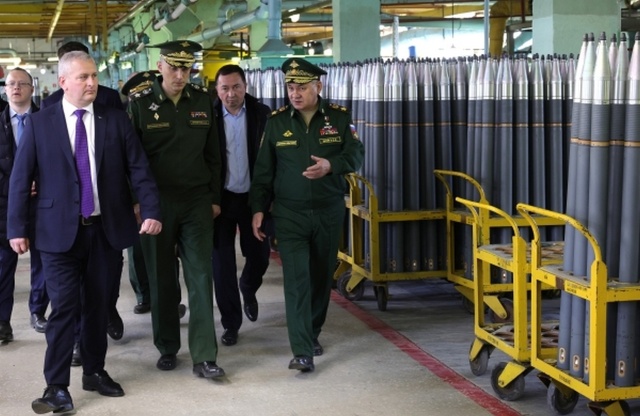 |
| Russian Defense Minister Sergei Shoigu during the inspection of the fulfillment of the state defense order at the defense industry enterprises. |
| Source: RIA Novosti |
In the leader of the European Union - Germany - in March, the biggest strike in 30 years took place, paralyzing the country's transport network. The trade unions demanded to raise wages by 10%, after 18% inflation in two years, but they did not find support from the government and the strikes will continue.
The only radical way to switch to a wartime economy is to declare war. However, Europe is not eager to fight with a nuclear power. According to polls, only 5% of Germans answered that they would join the soldiers' ranks voluntarily, another 6% agree to fight on mobilization. The majority - 33% will try to adapt their lives under any circumstances, and 24% will try to leave the territory of Germany in the event of a war.
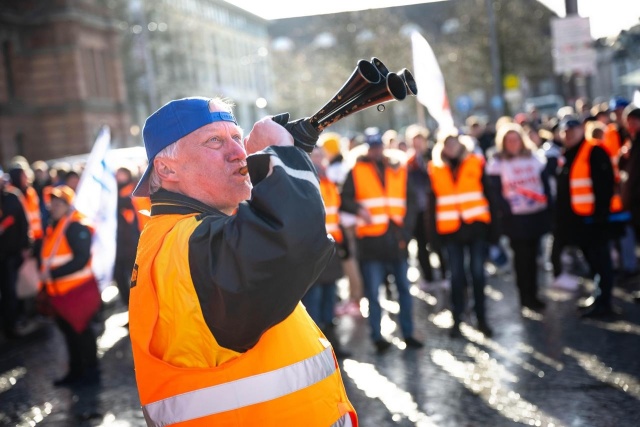 |
| The strike of transport workers paralyzed most of Germany. |
| Source: globallookpress.com |
Under the current conditions, Russia only needs to withstand the blow that Western countries are able to provide by arming Ukraine. In 2024, the European military-industrial complex will not be able to provide the necessary capacity to continue the conflict of the same intensity, and the US military-industrial complex will work more "for storage", as the US army is preparing for a military confrontation with China.
Oleg Ladogin
